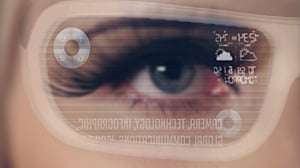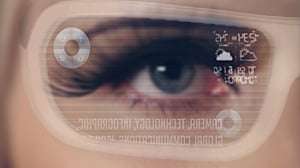Although Google Glass promises to bring everyday activities closer to us, many users have already lost interest in this device. That’s mainly because Glass is considered inappropriate for use in many situations, especially due to privacy concerns. Is Glass doomed to failure?
Not quite. Maybe Glass will never become a fully-realized product; however, wearable technology like is the future of gadgets. For this reason, specialists are still testing Glass, incorporating it in various industrial applications to find out how users can make the most of it.
Additionally, new applications and features are constantly being developed to turn Glass into a truly versatile device, which can be used to perform a wide range of tasks. Another point worth mentioning is that an increasing number of developers are creating open source software solutions, which will support further development of new applications for wearables like Glass. Google has also launched the Glass at Work program to introduce the new “Glass” technology to potential users.
Google Glass for ERP
Many enterprises have already incorporated Glass into their daily operations. To begin with, ITAMCO – one of the largest precision machining and gear manufacturers in the US – has combined Glass with MTConnect (an application that can be synchronized with Glass to retrieve and share information) to monitor tools accurately. ITAMCO workers can use Google Glass to collect information. As soon as they connect Glass to MTConnect, the application retrieves tool identification numbers and codes, recording data for future reference. MTConnect can also be set up to retrieve different information, including power statuses, alarm messages, execution paths, machine/part locations, etc. Finally, thanks to the Internet and email capabilities of Glass, users can share data with each other within seconds.
Plex is another company that decided to test the capabilities of Google Glass. A few employees programmed the device to connect to Plex ERP software. Then, they used both Glass and the system to record and manage different information, such as production data, machine statuses, transactions, etc. Unsurprisingly, Glass seamlessly connected to all the systems and machines available on both the shop floor and the “top” floor.
Procore, another important software developer, has created a project management platform to help managers become more productive in their jobs. Users can connect Procore platform to Glass to retrieve information and make data available across various devices, including Smartphones, tablets, and computers. This way, authorized users can access Procore to view the status of projects, manage documents, organize tasks, etc.
Many other companies operating across different sectors, ranging from manufacturing, food processing, distribution, and MRO to home services and health care are testing Google Glass as we speak. However, there are a series of shortcomings, such as short battery life, poor scanning capability, and excessive heating during operation, just to name a few, that Google must address and solve as soon as possible to encourage more widespread use of Glass.
Undoubtedly, Google Glass holds great potential for the ERP industry. In a few years, managers will be walking around shop floors wearing Glass to get and share relevant information in a timely manner. This way, complex business areas, ranging from production, inventory, and supply chain to human capital, will be managed easily and quickly, even right on the spot. All these could add exceptional value to the entire ERP sector.
 Google Glass Ready for ERP">
Google Glass Ready for ERP">
